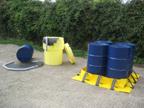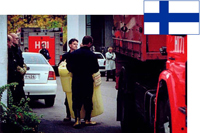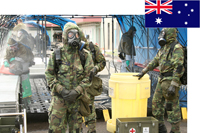Separation and Storage of Hazardous Liquids
The improper storage of corrosives and flammable liquids is the leading cause of spills that can result in damage to facilities and impact worker safety. One of the most effective practices to help minimize damage from chemical spills is to isolate the various chemical hazards. Since knowledge of chemical compatibility is critical, it is important to understand that there are two major types of chemical hazards that require their own unique storage and transfer protocols. The two types of chemicals that pose the greatest risk can be classified as either:
Corrosive materials, which include acids and bases
Flammable or combustible liquids
Corrosive materials have the potential to severely damage surfaces or other substances it contacts. Physical hazards to workers include chemical burns, skin or eye damage; and inhalation or ingestion of a corrosive liquid can cause respiratory damage.
Flammable and combustible liquids are defined by their flash points. A liquid's flash point is a function of its vapor pressure and boiling point. Flammable and combustible liquids are classified by the National Fire Protection Association (NFPA) based on their flash points:
Flammable Liquids (Class I): Liquids with flash points below 100°F (37.8°C) and vapor pressures not exceeding 40 pounds per square inch (absolute) at 100°F (37.8°C).
Combustible Liquids (Classes II and III): Liquids having flash points at or above 100°F (37.8°C).
The most effective way to isolate your flammable and corrosive hazards is to store them properly in approved safety storage containers and cabinets. Using the correct flammable storage (gas cans) or chemical storage containers are the first line of defense. The next step is to utilize the appropriate chemical safety storage cabinets in order to isolate corrosive liquids and flammable liquids from other incompatible chemicals; and to contain the hazards in the event of spill or leakage.
Flammable Storage Regulations
Both the Uniform Fire Code and the National Fire Protection Association have regulations specifying when flammable liquids should be stored in an approved flammables safety storage cabinet.
Uniform Fire Code. UFC 79.202A(2):
" ... flammable and combustible liquids are allowed to be stored in amounts necessary ... When quantities exceed 10 gallons, storage shall be in cabinets in accordance with section 79.202 (C)."
National Fire Protection Association. NFPA #30 Section 45.4.2:
"Not more than 10 gallons of Class I or Class II liquids combined shall be stored ... outside a safety storage cabinet."
If you store in excess of 10 gallons of flammable/combustible liquids, then you are required to store them in an approved flammables safety storage cabinet that meet or exceed NFPA and OSHA specifications for the storage of flammable and combustible liquids.



